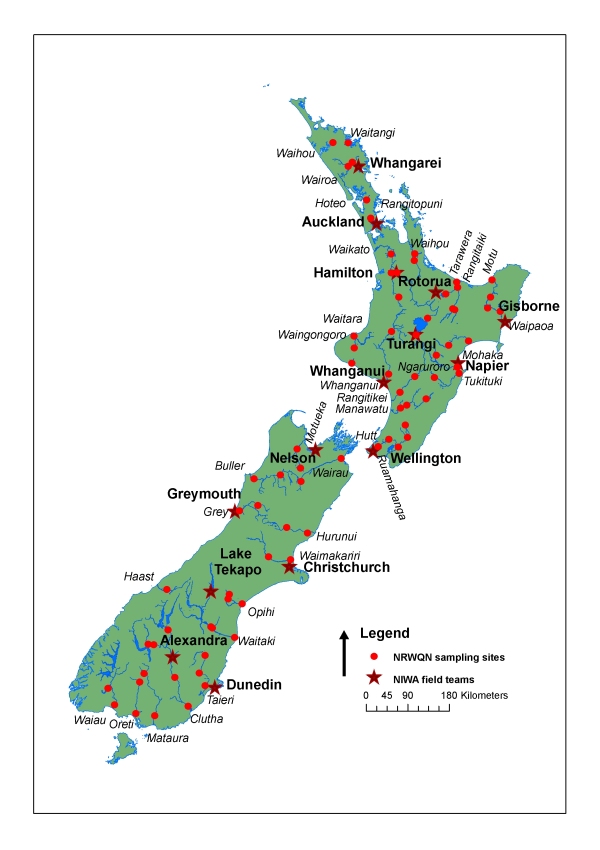Water quality variables measured
NIWA measures a large range of physical and chemical variables, covering four main categories:
Physico - chemical variables: dissolved oxygen, temperature, pH, conductivity Optical variables: Visual clarity, turbidity, coloured dissolved organic matter Nutrients: Total and dissolved forms of nitrogen and phosphorus Microbial Indicator: E. coli (since 2005).
Find out further information on what we measure.
In addition, we also measure several biological indicators of water quality, specifically macroinvertebrates and periphyton. Dissolved oxygen, temperature and visual clarity are collected directly while in the field. Water samples are obtained from each site and freighted by overnight courier to the NIWA laboratory in Hamilton, where the remaining water quality variables are measured.
Periphyton (algae attached to the river bed), can sometimes be a nuisance, and its cover at each site is visually assessed. Benthic macroinvertebrates are sampled from the river bed at suitable sites, using a Surber sampler in late summer. The types of invertebrates present (e.g., mayflies versus snails) provide an ‘integrating’ index of river ecological ‘health’. Benthic biological data has been used for a wide range of applications. This includes SoE reporting, practical water management and scientific applications.
The National River Water Quality Network (NRWQN)
The NRWQN was first established in January 1989 and was designed to provide reliable scientific information on many important physical, chemical, and biological characteristics of a selection of river waters across Aotearoa’s New Zealand. The original network comprised 77 sites on 35 fairly large rivers that collectively drained about one half of New Zealand’s total land area. On most rivers there were two or more sites representing an upstream ‘baseline’ site (lightly impacted) and a downstream ‘impact’ site (reflecting the impacts of humans on water quality).
With extensive regional and unitary council monitoring networks now available to inform national assessments of state and trends in water quality, NIWA has been focussing recently on new technologies for more efficient and effective monitoring of river water quality (with some NRWQN sites taken over by regional and unitary councils).
Water samples are collected monthly from the sites and analysed for a range of physical and chemical variables. Periphyton cover is also assessed monthly. In addition, benthic invertebrate samples are collected at most sites on an annual basis.
The NRWQN data have been used in an extensive range of scientific and resource management applications, and contribute to NZ’s international environmental reporting obligations. Data from our existing sites also continue to contribute to national (and international) reporting of state and trends in river health, alongside council monitoring data (see Land, Air, Water Aotearoa (LAWA) - River Quality).
NRWQN water quality data are available free for download on our Hydro Web Portal.
The benthic biological data are available on on NIWA's Freshwater GBIF archive.
-

What do we measure?
Research ProjectA range of physical and chemical variables are measured in the NRWQN.

